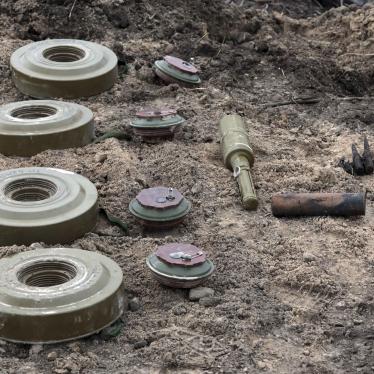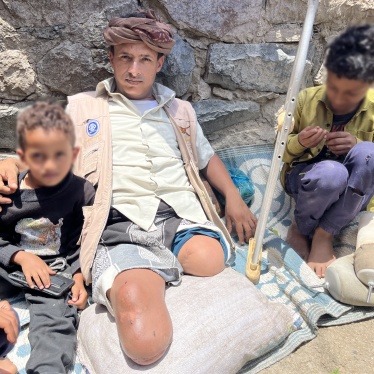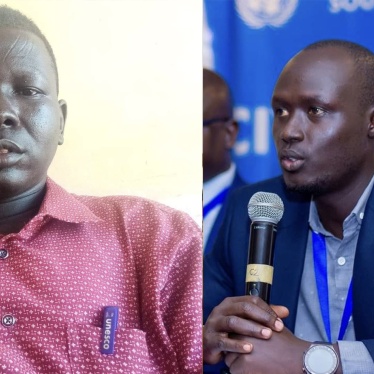The global context for today’s discussion is the attacks on global norms and the potential weakening of them, especially norms in warfare established by the laws of war or international humanitarian law (IHL).
This is being witnessed especially in Ukraine, with countless atrocities by Russian forces, and in Gaza, with countless atrocities by Israeli forces. But it is also seen in Sudan, Myanmar, Yemen and elsewhere. Norm-breaking and IHL violations in every corner of the globe.
Yet, I hope, and I believe, that this is a snapshot rather than an irreversible trend. If we step back just a bit, there has been tremendous success in norm-building over the past two and a half decades, mainly through humanitarian disarmament, which focuses on the protection of civilians. The examples are powerful: the 1997 Mine Ban Treaty, the 2008 Convention on Cluster Munitions, the 1995 protocol banning blinding lasers, the 2013 Arms Trade Treaty, the 2017 Treaty on the Prohibition of Nuclear Weapons, the 2022 Declaration on the Use of Explosive Weapons in Populated Areas. We have also been working intensively for more than a decade to achieve a legally binding instrument on autonomous weapons systems, or killer robots.
If we can carry this work forward and build on it, we will live in a better, safer world.
The Mine Ban Treaty norm remains strikingly strong, although there are challenges, large and small. The strength is seen in its 164 states parties, the 55 million stockpiled antipersonnel mines that have been destroyed, and in other factors. But the impact of the landmine ban norm outside of states parties has been impressive. There has been no confirmed trade of antipersonnel mines since the 1990s. There is limited production of antipersonnel mines today with Landmine Monitor reporting less than a dozen states not party that are still producing antipersonnel mines or insist on the right to produce them in future.
Currently, according to the Landmine Monitor, a small number of states not party are actively using antipersonnel mines: Russia, Myanmar, and, according to recent reports, North Korea. In addition, a handful of non-state armed groups are using antipersonnel mines.
There is credible evidence that state party Ukraine used antipersonnel mines in 2022 in Izium and possibly elsewhere. Many consider this the most grave violation of the Mine Ban Treaty in its existence. We look forward to Ukraine’s update on how it is dealing with this matter.
So, how do we strengthen these norms?
One way is to reject strongly and immediately the claim that, while antipersonnel mines may be “bad,” they must be used in the most dire situations. But, a ban is a ban and must be respected in all circumstances. The weapon is banned because of its indiscriminate impact and long-lasting humanitarian harm.
Antipersonnel mines should be treated like weapons of mass destruction. They should be held in the same contempt and avoided at all costs. A colleague has called them, weapons of mass destruction in slow motion.
Broadly speaking, there are five key ways to strengthen the treaty’s norms.
First, there should be better compliance by states parties with all articles of the Mine Ban Treaty, along with full, timely implementation. We hope to discuss compliance at length in another session. Second, there must be strong condemnation of any use of antipersonnel mines by any actor at any time. Third, efforts toward universalization of the Mine Ban Treaty should be redoubled. Fourth, there should be greater outreach to non-state armed groups to educate and ensure their adherence to the norm against any production and use of antipersonnel mines. Finally, there should be renewed efforts to maximize the effective and longstanding partnership between the International Campaign to Ban Landmines and other members of civil society, the International Committee of the Red Cross, United Nations agencies, and states parties. The partnership that brought about the Mine Ban Treaty has been key to its enduring success.
Briefly, there are many more specific measures to consider, such as promoting interim steps to joining the Mine Ban Treaty; undertaking coordinated steps to engage states not party; making better use of the “early warning mechanism” in the Oslo Action Plan; and engaging in more high-level diplomacy.
Finally, states parties should recognize and be vocal about the wide range of explosive devices that are banned by the Mine Ban Treaty. The treaty defines antipersonnel mines by their effect, not by their name. Any device that explodes from the presence, proximity, or contact of a person IS considered an antipersonnel mine and prohibited by the Treaty. Thus, victim-activated IEDs are banned; explosive booby-traps are banned. There is little recognition of this globally, but it is crucial to upholding the norm.
Thank you.







